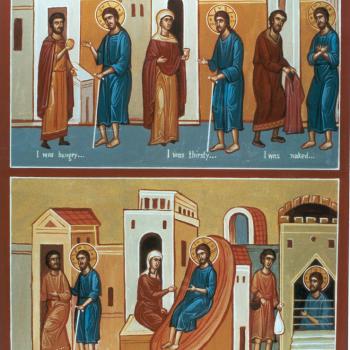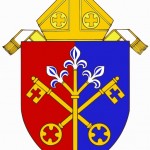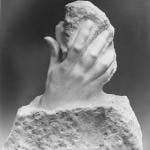 Priests wear chasubles. Deacons wear dalmatics.
Priests wear chasubles. Deacons wear dalmatics.
My own husband is a deacon, so I already know that. An awful lot of Catholics don’t know, though, how to tell the difference between the liturgical attire for a priest and a deacon.
Here’s a big hint: Sleeves!
The chasuble, the outer garment worn by a priest during Mass, does not have sleeves. The deacon’s dalmatic is a matching garment, in the same liturgical color, but it has wide sleeves.
This has been on my mind since I read this week’s “On the Liturgy” column by Fr. Edward McNamara on the Catholic website Zenit, in which he answers questions from readers. Father McNamara is a professor of liturgy and dean of theology at the Regina Apostolorum university in Rome. This week, he’s talking about the dalmatic–and I thought I’d share his insights, and a little bit more.
* * * * *
The History of the Dalmatic
 Nothing new, the dalmatic was introduced by Pope Sylvester in 314 A.D. Deacons wore it as an outer garment, as they do today; and the pope himself wore it as an under garment, under the chasuble. Interestingly, bishops and priests were normally not permitted to wear a dalmatic; it was reserved for popes and deacons.
Nothing new, the dalmatic was introduced by Pope Sylvester in 314 A.D. Deacons wore it as an outer garment, as they do today; and the pope himself wore it as an under garment, under the chasuble. Interestingly, bishops and priests were normally not permitted to wear a dalmatic; it was reserved for popes and deacons.
Fr. McNamara explains that even before the dalmatic was worn as part of Roman Catholic liturgical functions, it was worn by Roman citizens. At first it was longer, reaching down to the heels, and much more ample. Some complained that it was effeminate; but it eventually became popular among Roman senators and imperial officers. It became a substitute for the toga, and was even used as the proper garb for the consecration of the emperor.
Because of its cruciform shape, the dalmatic is sometimes regarded as a symbol for the sufferings of Christ.

The Dalmatic in Current Practice
The dalmatic, Fr. McNamara explains, is for deacons what the chasuble is for priests. It’s used during liturgy as an outer garment.
Fr. McNamara mentioned one other unusual use: Bishops today may wear a light dalmatic underneath the chasuble in solemn situations, especially ordinations.
The Liturgical Colors
The dalmatic and deacon’s stole, like the chasuble and stole worn by the priest, will generally be in the color appropriate for the liturgical season. Typically, the colors are:
- White – signifies light, innocence, purity, joy, glory. White is worn for Christmas and Easter, Feasts of the Lord (other than his passion), Feasts of Mary, the angels, and saints who were not martyrs, Feasts of the apostles. White is also appropriate for nuptial masses and masses for the dead.
- Red – signifies Christ’s Passion, blood, fire, God’s love, and martyrdom. Red is worn on Feasts of the Lord’s Passion, Blood and Cross, as well as on Feasts of the martyrs. Red is also worn on Palm Sunday and on Pentecost, when it signifies the fire of the Holy Spirit.
- Green – signifies the Holy Spirit, life eternal, and hope. It is the traditional color of Ordinary Time–the time after Epiphany and after Pentecost.
- Violet – (amaranth red) signifies penance, humility, and melancholy (sadness). Violet is worn during the seasons of Advent and Lent, and on Vigils except for Ascension and Pentecost. It’s also worn on Good Friday.
Gold and Silver may sometimes be used in place of white.















